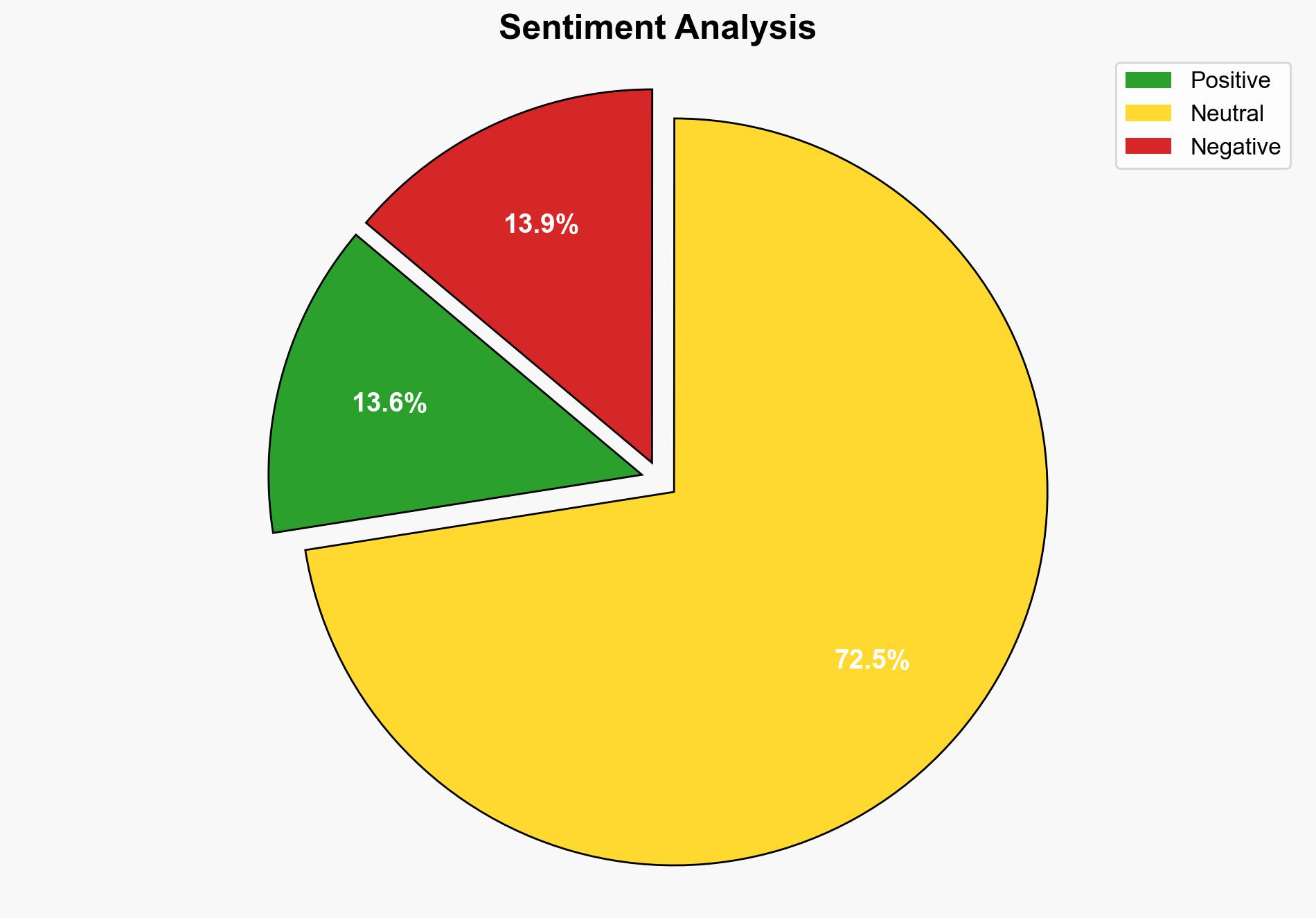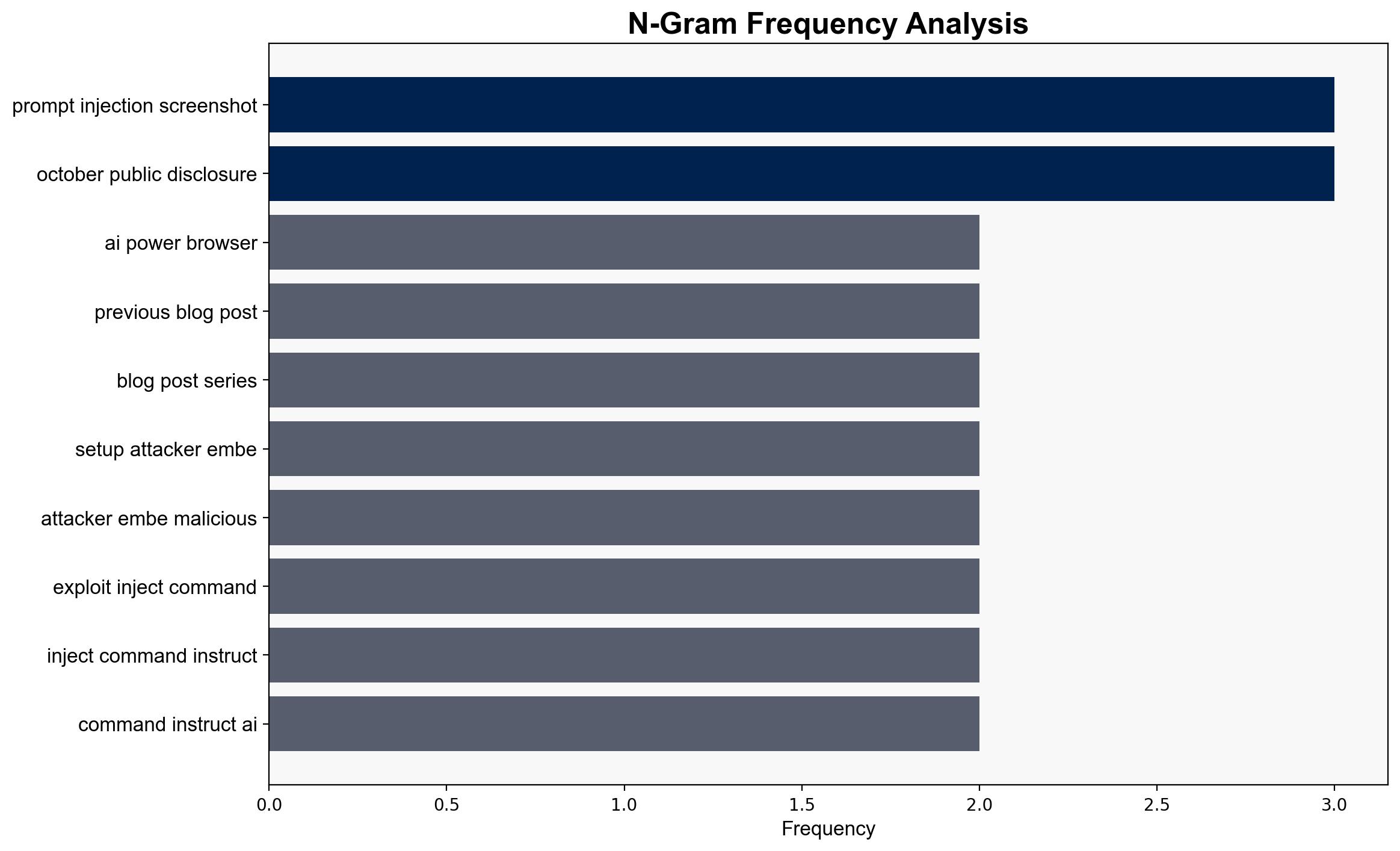Unseeable prompt injections in screenshots more vulnerabilities in Comet and other AI browsers Brave – Brave.com
Published on: 2025-10-25
Intelligence Report: Unseeable prompt injections in screenshots more vulnerabilities in Comet and other AI browsers Brave – Brave.com
1. BLUF (Bottom Line Up Front)
The analysis identifies significant vulnerabilities in AI-powered browsers, specifically through unseeable prompt injections. The most supported hypothesis suggests these vulnerabilities are systemic across AI browsers, posing substantial security risks. Immediate action is recommended to enhance security protocols and conduct comprehensive vulnerability assessments. Confidence level: High.
2. Competing Hypotheses
Hypothesis 1: The vulnerabilities are isolated incidents specific to Comet and similar AI browsers, resulting from inadequate security measures in these specific platforms.
Hypothesis 2: The vulnerabilities represent a systemic issue inherent in the architecture of AI-powered browsers, affecting multiple platforms due to the nature of AI integration and input handling.
Using Analysis of Competing Hypotheses (ACH), Hypothesis 2 is better supported. The repeated discovery of similar vulnerabilities across different browsers suggests a broader, systemic issue rather than isolated incidents.
3. Key Assumptions and Red Flags
Assumptions:
– AI browsers inherently possess vulnerabilities due to their reliance on AI for input processing.
– The security measures currently in place are insufficient to detect or prevent these types of prompt injections.
Red Flags:
– Lack of detailed public disclosure on the full extent of vulnerabilities.
– Potential underreporting or delayed reporting of vulnerabilities by affected companies.
4. Implications and Strategic Risks
The vulnerabilities could lead to significant security breaches, including unauthorized access to sensitive information and financial theft. The systemic nature of these vulnerabilities suggests potential for widespread exploitation, impacting user trust and browser adoption. Economically, this could lead to increased costs for companies in terms of security upgrades and potential legal liabilities. Geopolitically, these vulnerabilities could be exploited by state actors for cyber espionage.
5. Recommendations and Outlook
- Conduct comprehensive security audits of AI-powered browsers to identify and patch vulnerabilities.
- Develop and implement robust input sanitization protocols to prevent prompt injections.
- Engage in industry-wide collaboration to establish security standards for AI browser development.
- Scenario Projections:
- Best Case: Vulnerabilities are quickly identified and patched, leading to enhanced security and user trust.
- Worst Case: Widespread exploitation of vulnerabilities results in significant data breaches and financial losses.
- Most Likely: Incremental improvements in security measures reduce but do not eliminate vulnerabilities, requiring ongoing vigilance.
6. Key Individuals and Entities
Artem Chaikin, Shivan Kaul, Sahib
7. Thematic Tags
national security threats, cybersecurity, counter-terrorism, regional focus




